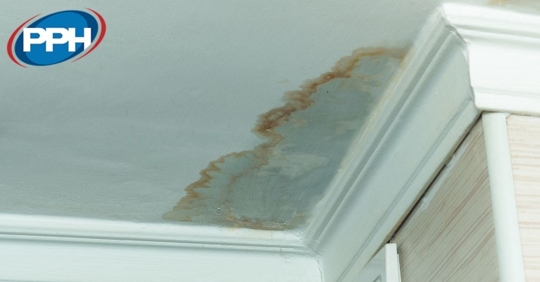Just like most other things in our homes, there comes a time when parts of our plumbing system need repairs. Your toilet may refuse to flush, you may not have working hot water, or you may spring a leak.
When many homeowners hear the word “leak,” images of a dripping tap may come to mind. This is an easy leak to spot as you use your faucet every day. But what about the leaks that don’t make themselves as easily known?
What is a Hidden Leak?
Hidden leaks, as their name implies, are leaks in your pipes that are not as obviously visible to you in everyday life. By going under cover, these leaks can cause extensive water damage to your home without you even noticing.
These leaks can happen in any home and the most common causes include:
- Old pipes. Over time, certain pipe materials wear down and can develop leaks.
- Corrosion. This can happen due to cleaning products and hard water.
- Water pressure. Too high of water pressure can be too much for your pipes to handle.
- Clogs. Particularly bad clogs can lead to burst pipes or overflowing issues.
- Tree roots. As they grow towards the water and nutrients in your piping, they can enter and damage the system.
- Temperature changes. Sudden changes in temperature can cause pipes to crack or burst.
Scheduling regular inspections and keeping up with maintenance will allow your plumber to stay on top of these problems and hopefully help avoid damaged pipes and hidden leaks.
The Effects of Hidden Leaks
Water and the materials in your home are not a good mix. Excess water due to a hidden leak will likely lead to mold and mildew growth around the area, accompanied by a musty smell. If left long enough, the mold will continue to grow and spread, causing further damage to your home and your health.
Hidden leaks also lead to damaged wallpaper and paint, flooring, and walls, impacting your home’s stability and structure.
Finding Hidden Leaks
Now that you know what a hidden leak is, let’s explore your home and discover how to discover them.
Damage
One of the more obvious signs is visible damage throughout your home. If you notice staining on your ceiling or walls, bubbling or peeling paint, or warped, buckled floors, you likely have a hidden leak on your hands.
Your Water Bill
A hidden leak is using up more water than you need, and your water bill should reflect that. Monitor your water bills closely and if you notice a sudden increase in water usage, investigate.
Keep an Eye Out
A great way to stay on top of hidden leaks is to regularly inspect your plumbing for them. One of the easiest ways to do this is by looking in the cabinets underneath your sinks and around your toilets, washing machine, dishwasher, and water heater. If you notice water spots, musty smells, or mold, you have a leak.
The Toilet Test
Certain toilet tests can be particularly sneaky, but you can sniff them out with this test. Put a few drops of food coloring into the water in your toilet’s tank. If after ten minutes, you notice the food coloring has spread to the water in the toilet bowl, you have a leak. This leak is moving water between the tank and bowl without flushing.
The Most Common Hidden Leaks
We highly recommend keeping an eye out for hidden leaks on a weekly basis. This could save you the time and money required to repair your water-damaged homes. The most common places for hidden leaks are:
- Faucets
- Shower heads
- Water heater
- Supply lines
- Beneath the dishwasher or washing machine
- Under the toilet
If you’re not sure how to look for leaks yourself, give your plumber a call! The team at Patterson Plumbing & Heating, Inc. offers leak detection services to locate and repair any leak in your home.
If you suspect there is a hidden leak lurking somewhere in your home, don’t hesitate to take action! Give Patterson Plumbing & Heating, Inc. a call at (719) 496-4939 for reliable, expert repairs today!

